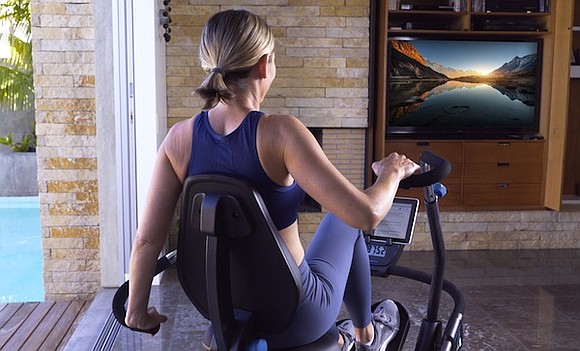Tips for Relieving Joint Pain in the New Year
Style Magazine Newswire | 12/31/2019, 9:35 a.m.
(StatePoint) The health benefits of regular exercise are undeniable, and the U.S. Department of Health and Human Services recommends 30 minutes of exercise at least five times per week. However, high-impact exercises like running and weight training can lead to joint pain, especially if you have a joint condition. The good news is that smart exercises with low impact can alleviate joint pain and deliver the same health benefits.
Here are a few tips to consider for a healthy start to 2020:
Keep Moving
Trying to protect your joints by not moving actually does more harm than good. Regular exercise can actually help joint pain and ease symptoms of chronic joint conditions, according to the Centers for Disease Control and Prevention. Just be sure to talk to your doctor about your exercise plan before you get started.
Go Low Impact
You don’t need to put tremendous weight on your joints or jump up and down in order to break a sweat or elevate your heartrate. When you’re already in pain, this type of exercise can actually make things worse. Instead, opt for high-quality, low-impact workouts.
There are now exercise machines available for home use that provide the same quality low-impact workout you’d get in physical therapy. Consider the Teeter FreeStep Recumbent Cross Trainer, a seated exercise machine that takes the weight off the joints while torching calories.
Unlike other recumbent machines which can be bad for the knees, the FreeStep mimics a natural stepping motion that prevents knees from traveling over the toes, as well as stabilizes the back and hips. And you don’t have to sacrifice workout quality – in fact, research shows that FreeStep users burn 17.4 percent more calories than when using a recumbent bike at the same level of effort. Beyond calorie burn, it also offers full-body resistance training, which is especially important, as weak muscles can be a root cause of pain.
Hydrate
It may seem obvious, but ensuring that you drink the recommended daily intake of water is vital to reducing pain in your joints.
Proper hydration helps your body eliminate wastes and toxins that can lead to painful joint conditions. Plus, it helps to keep the joints lubricated and flexible, reducing friction and inflammation and helping to maintain healthy tissue.
Stretch Daily
Stretching increases flexibility and range of motion, improves movement and function, reduces pain and stiffness and prevents further injury. Just remember to move slowly and keep it gentle.
At the very least, spend a good five to 10 minutes in the morning stretching your hamstrings, quadriceps, calf muscles and hip flexors.
For a free photo guide to “5 Daily Stretches to Relieve Knee & Joint Pain,” plus a code for $75 off the FreeStep (good through January 31, 2020), visit teeter.com/freestep-guide.
With the right exercises and maintenance program, you can improve your health and get a stronger body, without pain.




